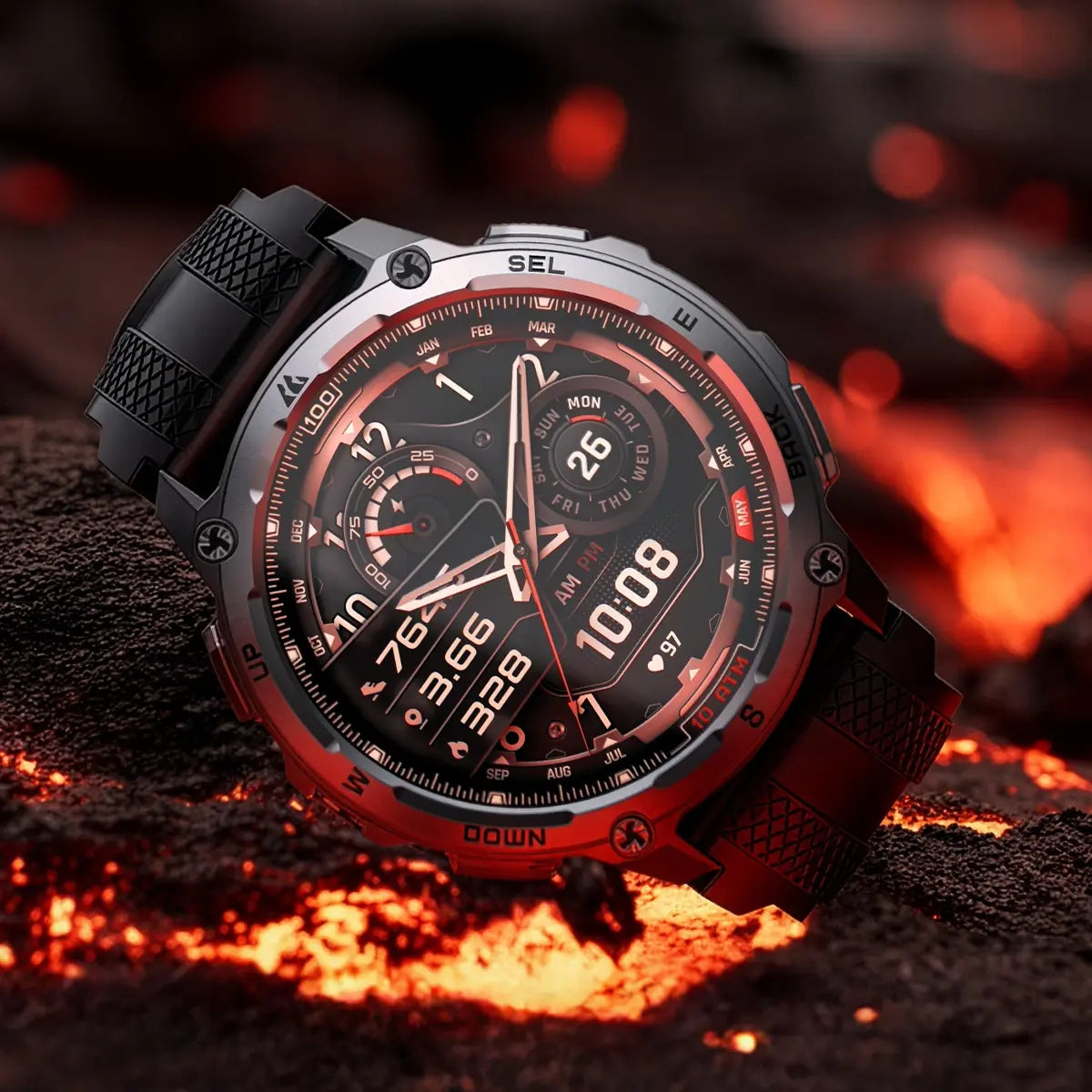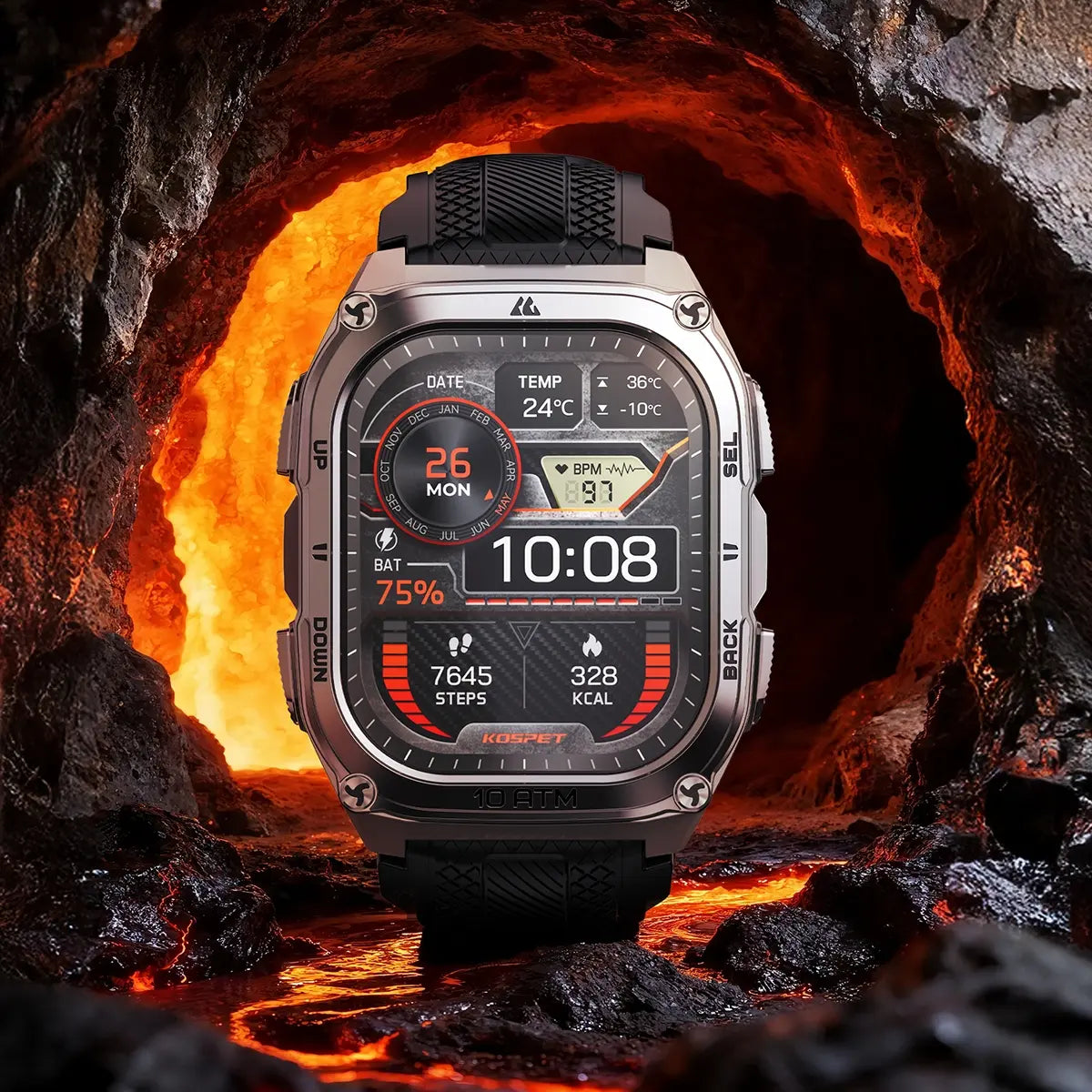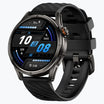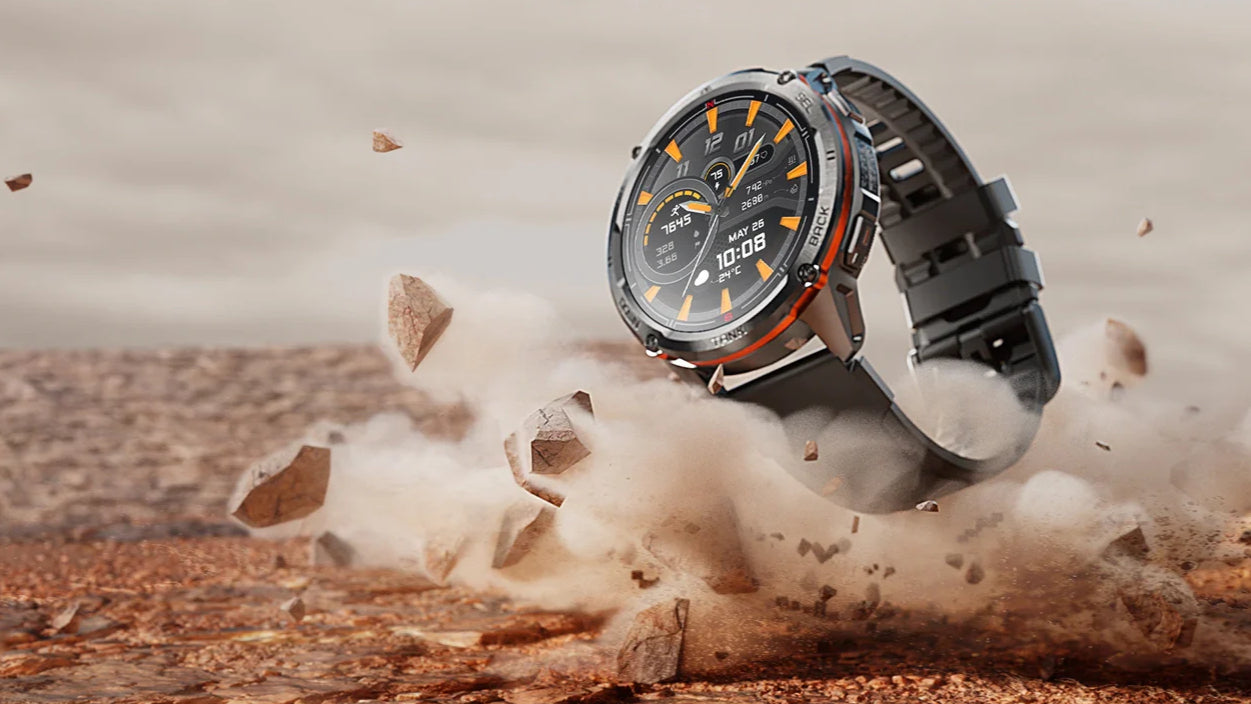When you’re choosing an outdoor watch, one of the most important features to consider is battery life. After all, you don’t want your watch to die in the middle of an adventure, whether you're hiking, running, or exploring new trails.
But what exactly affects the battery life of outdoor watches? In this blog, we’ll explore the key features that impact battery life and how they can affect your outdoor experience.
Understanding these factors will help you make an informed decision when choosing a watch that suits your needs.
Understanding the Key Features That Impact Outdoor Watch Battery Life
GPS and Mapping Functions
Outdoor watches are often used for GPS navigation, tracking your location, and mapping your route. While this is an essential feature for many activities like hiking or cycling, it’s also one of the biggest power drains.
GPS works by communicating with satellites, and this constant connection uses up a significant amount of battery. If you're planning long hikes or multi-day trips, this feature can be a major factor in how often you need to recharge.
For a longer-lasting battery, look for watches that offer power-saving GPS modes. These modes may reduce the frequency of GPS updates, helping to conserve battery while still providing essential tracking. Some outdoor watches also allow you to manually turn off GPS tracking when it’s not needed, saving power during less demanding activities.
Display Type and Brightness
The display on your outdoor watch plays a big role in how much battery it consumes. Watches with AMOLED or LCD displays tend to consume more power compared to those with MIP (Memory In Pixel) displays.
AMOLED screens are bright and vibrant but require more power to maintain the display, especially when the brightness is turned up.
If battery life is a concern, consider a watch with an MIP display. MIP screens are much more power-efficient and are easier to read in direct sunlight, which is essential for outdoor activities.
Additionally, lowering the screen brightness or using automatic brightness adjustment can further extend battery life, particularly in outdoor settings where bright screens are often not necessary.
Sensors and Health Tracking
Outdoor watches often come equipped with various sensors, such as heart rate monitors, altimeters, and barometers. While these sensors provide valuable data for tracking health and performance, they also consume battery power.
Continuous heart rate monitoring, for example, uses a significant amount of power over time, especially if it’s running throughout the day.
To conserve battery, consider turning off health sensors when you don’t need them. Some watches let you manually adjust the frequency of data collection, such as how often the heart rate monitor checks your pulse.
This can help save battery while still providing useful insights when you need them most.
Wireless Connectivity
Most outdoor watches come with wireless connectivity options like Bluetooth and Wi-Fi. These features allow you to sync data with your phone, receive notifications, or connect to the internet.
However, leaving Bluetooth and Wi-Fi enabled all the time can quickly deplete your watch's battery, especially if it's constantly searching for connections.
To extend battery life, turn off wireless features when you don’t need them. For example, only sync your watch with your phone after a workout or when you’re back at camp.
Some outdoor watches also have “airplane mode” or similar settings that disable all wireless connections, helping conserve power.
How Battery Technology and Charging Methods Influence Battery Life

Battery Capacity and Power Efficiency
The size of the battery and how efficiently it powers the watch are key factors in determining battery life.
Outdoor watches with larger batteries tend to last longer, but they can also be heavier. On the other hand, more compact models might have shorter battery lives but can be more lightweight and comfortable to wear.
Battery efficiency is another crucial factor. Modern outdoor watches often use more power-efficient batteries, which means they can last longer even with a smaller battery.
When choosing a watch, consider not just the battery size but also how well the watch has been designed to conserve power.
Solar Charging and Other Charging Options
Many outdoor watches now offer solar charging as a way to extend battery life during long trips. Solar-powered watches can charge themselves using sunlight, which is ideal when you're in remote areas where electrical outlets are unavailable.
This feature allows you to keep your watch powered without needing to find a charging station, making it a great option for extended outdoor adventures.
Another innovative solution is the use of portable charging devices. Outdoor watch manufacturers now offer compact charging accessories, such as power banks specifically designed for watches.
These devices allow you to carry extra power with you and recharge your watch on the go, which can be especially useful for multi-day hikes or wilderness excursions. Power banks for watches are often lightweight, easy to pack, and can be charged via USB or solar power, offering flexibility during long trips.
If you’re planning an extended adventure, opting for a watch with solar charging capabilities or bringing along a watch-specific power bank could significantly extend your watch's battery life, ensuring you stay connected to your tracking, health data, and navigation tools for the entire journey.
How Different Outdoor Activities Affect Battery Usage
Hiking and Trekking
When you're hiking or trekking, your watch is likely using GPS, tracking your altitude, and monitoring your heart rate. These activities require continuous power, and if you’re on a multi-day hike, battery life becomes especially important.
To maximize battery life, turn off GPS when it's not essential, reduce the frequency of heart rate readings, and adjust the display to lower brightness.
Many outdoor watches come with a power-saving mode specifically for hiking or trekking, which helps extend battery life by limiting features that drain power.
Running and Cycling
Running and cycling often involve intense tracking, with GPS used to track distance, speed, and route. These activities require frequent updates to GPS and heart rate data, which can quickly drain the battery. However, if you're running or cycling for long hours, it's important to select a watch with extended battery life and the ability to reduce GPS update frequency.
To conserve battery, consider turning off non-essential features, like continuous heart rate monitoring or frequent GPS updates. Some outdoor watches also allow you to select specific modes designed to minimize battery consumption during running or cycling.
Swimming and Diving
When it comes to water sports, many outdoor watches are designed to be waterproof and handle water-related activities like swimming or diving. However, underwater activities often limit the use of GPS, and some sensors may not function in water.
While swimming and diving may not drain as much battery as hiking or cycling, it's still important to choose a watch that is specifically built for water sports.
Watches designed for swimming or diving tend to use less battery by disabling GPS when submerged, and some may have additional power-saving features designed for underwater use. If you plan to use your watch for water sports regularly, ensure it has water-specific power-saving modes.
Tips to Maximize Battery Life on Your Outdoor Watch
Optimizing Settings for Better Battery Efficiency
To get the most out of your watch’s battery, make sure to optimize your settings. Turn off features like heart rate monitoring, GPS, or wireless connectivity when not in use.
Adjust the screen brightness to a lower setting or use an automatic brightness feature, which adjusts based on ambient light. Reducing unnecessary functions can make a big difference in extending battery life.
Using Power Saving Modes
Most outdoor watches come with built-in power-saving modes that help reduce battery usage without compromising essential features.
These modes typically limit the frequency of GPS updates, turn off non-essential sensors, and reduce screen brightness. By enabling these modes during activities like hiking or cycling, you can extend your watch's battery life significantly.
Conclusion
Understanding the features that affect battery life on outdoor watches is essential when choosing the right watch for your needs. By considering factors such as GPS usage, display type, and the activity you’ll be doing, you can make an informed decision that ensures your watch lasts throughout your adventure.
Keep these factors in mind when selecting a watch, and you’ll be ready for whatever outdoor activity comes your way without worrying about your battery running out.
FAQs
What affects the battery life of outdoor watches?
GPS usage, display brightness, sensors, and wireless connectivity all drain the battery. Power-saving modes and display types can help extend battery life.
How can I make my outdoor watch battery last longer?
Turn off unnecessary features, lower screen brightness, use power-saving modes, and reduce GPS updates to maximize battery efficiency.
Which outdoor watches have the longest battery life?
Watches with solar charging or ultra-low-power GPS modes tend to offer the longest battery life, ideal for multi-day hikes or long outdoor activities.
















Deja un comentario
Este sitio está protegido por hCaptcha y se aplican la Política de privacidad de hCaptcha y los Términos del servicio.